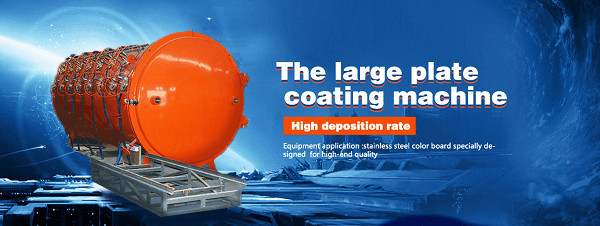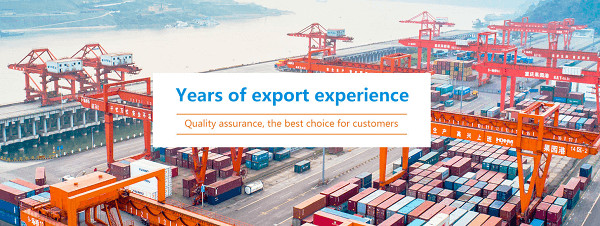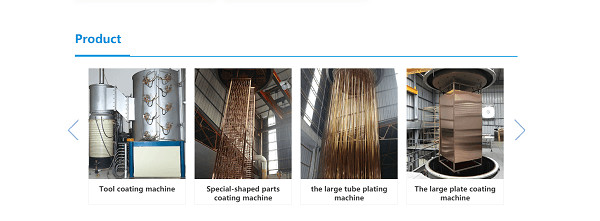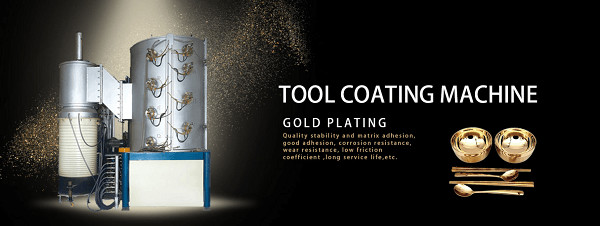Current status and market development of ultra-high barrier film preparation technology
Flexible and transparent ultra-high barrier films are increasingly in demand in high value-added fields, such as organic thin-film solar cells, flexible organic light-emitting diodes, electronic paper and lightweight vacuum insulation panels. A review of the research and development history of ordinary packaging films to ultra-high barrier packaging films, focusing on four aspects of preparation method, film structure, water and oxygen barrier properties and application status, systematically elaborated on ultra-high barrier inorganic oxidation for flexible electronic component packaging. The current situation of the preparation process of the material film and the in-depth investigation and research on its market development prospects. It is believed that high cost is the main factor restricting the large-scale industrialization of ultra-high barrier films, and the focus of future research is pointed out. Flexible electronic devices have a wide range of application prospects in the fields of information, energy, medical care, and national defense due to their unique flexibility/ductility and high-efficiency and low-cost manufacturing processes. Among the most promising ones are organic electroluminescent diodes (OLED) and OPVs.
vacuum coating machine,pvd coating machine,pvd vacuum machine,vacuum ion coating machine,multi-arc ion coating machine
Organic thin-film solar cells (OPVs) have significant advantages such as low material prices, easy processing, large-area film formation, designability of molecular and thin-film properties, light weight, and flexibility. They are a substitute for high-cost silicon solar cells. best choice. However, OPV has the disadvantage that the carrier mobility of organic semiconductors is lower than that of inorganic semiconductors. The organic polymers are easily affected by water and oxygen, resulting in poor stability. Therefore, the vacuum technology network (http://www.chvacuum.com/) believes that a packaging film with high barrier to water and oxygen is needed.
In flat panel displays, OLED has significant advantages such as high brightness, rich colors, low-voltage DC drive, and simple manufacturing process. In less than 20 years, OLED has entered the industrialization stage. The lifespan of OLED is greatly affected by components such as water vapor and oxygen in the air. The main reasons are: OLED devices need to inject electrons from the cathode during operation. This requires that the cathode work function is as low as possible. However, these metals such as aluminum, Magnesium, calcium, etc., are generally more active and easily react with infiltrated water vapor. In addition, water vapor will chemically react with the hole transport layer and the electron transport layer (ETL), and these reactions will cause the device to fail. Therefore, it is effectively packaged. For OLED to reach a lifetime of 10,000 hours, the water permeability of the packaging film must reach 10-6 g/m2, and the oxygen permeability must be less than 10-3 cm3/m2. Common barrier materials cannot meet this requirement. Therefore, it is necessary to develop transparent barrier materials. In addition to achieving the required water and oxygen permeability, this material also needs to be flexible, transparent, stable, and have the same expansion coefficient as the next layer.
The traditional packaging technology is to make an OLED layer on a rigid substrate (glass or metal), and then add a back cover to the device, then bond it into a whole after UV curing, and add calcium oxide or barium oxide inside the device for drying Agent to absorb the intrusive water vapor and oxygen, as in (a). There are two packaging methods for flexible OLEDs: ① Add a flexible polymer cover to the device similar to the traditional technology, and then make a barrier layer on the substrate and cover to block the penetration of water vapor and oxygen. Such as (b); ②As part of the display manufacturing process, the barrier layer is directly deposited on the display panel, such as (c).
vacuum coating machine,pvd coating machine,pvd vacuum machine,vacuum ion coating machine,multi-arc ion coating machine
Ultra-high barrier film preparation process status and market development
Compared with the latter method, the device is thinner, and there is no need to worry about the wear of the polymer cover during flexible display. However, this kind of packaging requires that the thin film barrier layer must be tightly bonded to the OLED substrate during the formation process. Finished at low temperature, and try to avoid damage to the organic layer.
There are many barrier films produced by different processes that can meet the requirements of flexible packaging. All these processes are to coat dense, transparent, water and oxygen barrier materials on the polymer substrate, so that it can maintain transparency and barrier to water and oxygen. The barrier materials are generally inorganic oxides or organic-inorganic laminates. In the organic-inorganic laminated structure, the inorganic layer has high water and oxygen resistance, and the organic layer can smooth and fill defects, and this structure can prevent the expansion of defects in the oxide layer in the multilayer structure. Inorganic materials mainly include oxides and nitrides such as SiOx, SiNx, Al2O3 and so on.
1. Overview of the development of ultra-high barrier film
vacuum coating machine,pvd coating machine,pvd vacuum machine,vacuum ion coating machine,multi-arc ion coating machine
Since the 1990s, barrier films have just begun to develop mainly for the field of packaging materials. The barrier film used includes aluminum foil, high-barrier organic polymer film and coating film. Aluminum foil has the best water and oxygen blocking rate, but it has poor flexibility, high cost, and opacity; high-barrier organic polymers have good transparency and excellent barrier properties at room temperature, which can reach 10-1, and have good flexibility and low cost. , It is still widely used in a variety of food packaging, but its biggest disadvantage is that the barrier properties under high temperature and humidity are significantly reduced, and multi-layer co-extrusion packaging is difficult to recycle, and PVDC coating film also has the problem of being environmentally unfriendly.
In response to the above problems, many companies have carried out research on inorganic oxide coatings. Among them, Mitsubishi, Toppan Printing and Dainippon Printing are the leaders, and they have launched their own commercial products between 2000 and 2002. In this period, most of the inorganic oxide coatings consisted of 12 μm substrate + single-layer inorganic barrier layer, with barrier properties of 100-10-1, good transparency, environmental friendliness, and barrier properties under high temperature and humidity. It can be applied to packaging materials that require high-temperature steaming and sterilization, and solar cell liquid crystal displays that have higher requirements for weather resistance. However, it also has the defects of brittle coating, not bending resistance, and higher cost. The coating equipment mainly includes high-frequency induction evaporation (such as Mitsubishi), electron beam evaporation (such as letterpress printing, Toyobo, Oike Kogyo, Canada ALCAN, etc.).
Around 2005, with the rapid development of the liquid crystal display field, new requirements were put forward for the barrier film, requiring the water and oxygen barrier rate of the barrier film to reach 10-2, which set off another round of research climax. In order to meet this requirement, the barrier film structure has also changed, most of which are 50-100 mPET/organic layer/inorganic barrier layer/organic layer. Due to the improvement of the required barrier performance, the original evaporation equipment has been difficult to meet the needs of development, so it has increased the research on the application of new equipment, such as Da Nippon Printing Plasma Enhanced Chemical Vapor Deposition (PECVD) and sputtering, Ke Nika PECVD, Mitsui, Japan Synthetic Chemicals, Sumitomo Chemical, Mitsubishi Chemical CAT-CVD method, Fuji CCPCVD method.
As more and more equipment capable of producing high-energy particle bombardment is applied to the production of inorganic barrier layers, the coating can be formed on the surface of the organic layer in a more compact manner, and the organic layer between the substrate and the barrier layer has added another item. New functions — the improvement of etching resistance and barrier properties makes people pay more attention to the flatness of the organic layer. Therefore, the materials used in the organic layer have also undergone corresponding changes. More heat resistance and etching resistance are adopted. Good ingredients are more applied to thermosetting resin types. During this period, the prototype of multilayer inorganic barrier layer structure has also appeared.
vacuum coating machine,pvd coating machine,pvd vacuum machine,vacuum ion coating machine,multi-arc ion coating machine
Since 2007, barrier film research has been closely related to the flexible OLED industry, and the water and oxygen permeability of sealing materials in the flexible OLED industry is required to reach 10-4 or less. To realize the application in the electronics industry, most of the substrates choose PEN with better heat resistance and smaller thermal expansion coefficient, and the thickness is more than 100 μm. The coating structure is mainly multi-layer, and the main research focuses on the design of the film structure, the composition of the organic layer and the selection of the organic layer film formation method. Companies such as Vitex, GE, and 3M in the United States have developed their own unique equipment and products and have sold them on the market.
4 Conclusion
With the continuous development of the flexible electronic product market, the market demand for ultra-high barrier films will inevitably further expand. Nowadays, many companies and research institutions are constantly developing barrier films with higher barrier properties in order to meet the needs of the continuous development of the market. Moreover, companies such as Vitex, 3M, and GE have launched commercial production of ultra-high barrier films, but they are only used in a small range. Among them, the most restrictive factor for its development and growth is the high cost. How to further reduce the cost through the optimization and improvement of the manufacturing process and the study of the film structure will be the focus of future research.
Founded in 2015,Zunhua Baorui Titanium Equipment Co.,Ltd. is a manufacturer specializing in pvd vacuum ion coating equipment. The company’s products mainly include large plate coating machine, large tube collating machine, tool coating machine and LOW-E glass production line. Mr.Wang baijiang ,general manager of the company ,has been engaged in vacuum coating industry for more than 30 years. He continuously improve production technology, improve product performance and devote himself to provide customers with better product experience and higher production efficiency.





